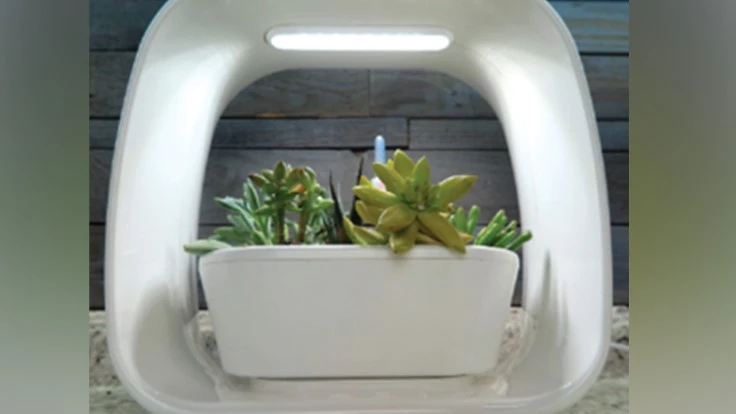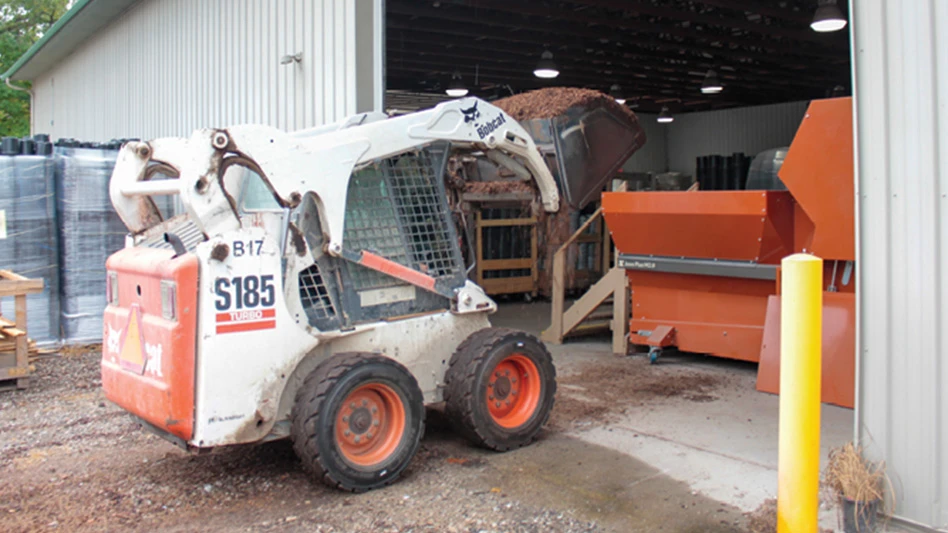

Nano gardening: have you heard of it? It’s what many new to the hobby of gardening are engaging in these days. Gardening, but on a micro-scale. For those with only very small spaces, such as a balcony or kitchen countertop in which to grow plants, nano gardening offers an accessible and relevant starting place for their enthusiasm for plant keeping.
One of our biggest struggles in the green industry is accepting that most of our customers don’t “garden” the way we might as professionals and hard-core gardeners. We keep trying to press our personal passions — and scale — on them in ways that don’t always resonate. Instead of always thinking bigger, we might want to shrink to fit for urban dwellers.
Most of our customers, or potential future customers, aren’t going to spend all their evenings and weekends creating a plant-intensive wildlife garden or prairie installation. Not all of our customers have an acre to transform into a lush urban oasis. They probably aren’t going to turn their whole backyard into a vegetable garden either, or get rid of their entire lawn until they are forced to (and as far as I’m concerned, multi-culture lawns serve good purposes). A small percentage will garden intensively DIY-style, and of course we always want to grow more enthusiastic gardeners and help them level up. That said, what many of our customers need from us is a sampling of what we have to offer, curated for tucking into small, manageable spaces — indoors or out.
I don’t know about you, but my Instagram feed is flooded daily with images of tropical houseplants and succulents shown off proudly, much like baby photos. The most stylish interior décor shots are often crammed full of houseplants, which are clearly meant to dominate the small living spaces. Indoor plants and gardens are no longer an accessory — they are the feature.
For the younger demographic, houseplants are it. Urbanization has meant more people moving into smaller spaces and more concentrated developments. Home buying has been delayed for many younger customers (or they’ve had to buy a smaller home or property) and they are looking to make the most of their smaller apartment and balcony spaces. There’s such a strong desire among this customer group to collect indoor plants, both to be surrounded by nature and to engage in the activity of caretaking. Tiny terrariums, micro-mason jar aquatic gardens and even simple moss balls are all the rage.
Because of these trends, I’ve seen a wave of small house plant shops popping up in big cities — small boutique-type shops with modern interiors that sell mostly tropical indoor plants and succulents with stylish pottery — usually with delivery service available. But that’s about it. A very focused business model for a very focused target customer. This is a niche that existing independent garden centers should already be able to serve. But clearly, the presence of these new small plant shops is a signal that we’ve let these potential customers slip through our fingers.
Urban environments are ground zero for hyper-local food. Space-saving fixtures such as hydroponic garden towers and countertop grow units empower those with only a few square feet to spare the ability to grow food indoors or on a balcony. There is already a big demand for growing herbs and greens indoors, but many want to grow beyond such leafy boundaries. I get tons of questions about growing specimen dwarf citrus trees indoors. And when people find out they can also grow tomatoes and peppers indoors (as well as many other dwarf vegetables) you can see the lights switch on in their eyes.
What they are all missing, however, are the lights that need to switch on indoors to grow such crops. To be frank, the fixtures we sell at IGCs for indoor microgreens, herbs and salad greens usually fall short in one major department: supplemental grow lighting. Why sell someone a wall unit for growing herbs in their kitchen when we all know there isn’t going to be enough light for all that basil and thyme? Same goes for greens or aquatic gardens; they all need extra light, and the right kind of light. If we’re going to help our customers be successful with nano gardening and food cultivation indoors, IGCs are going to have to embrace the indoor growing hardgoods category and become fluent in grow lighting technology and gear. And sell some of it! Because I know I sure don’t want to make a trip down to my local hydroponics store. Shiver. Luckily, there are now many more grow lighting options to choose from, as well as aesthetically pleasing fixtures customers can use in their living spaces.
Small-scale plant containment isn’t only on-trend for the indoor garden: one-pot gardens are on trend for those with small terraces or patios. Just because you don’t have a big yard doesn’t mean you can’t grow and enjoy shrubs and perennials. These days, I often recommend to homeowner clients to plant their favorite blooming shrubs, perennials and herbs in pots on their patios or balconies. Most of our customers are so conditioned to think of containers as annual-only receptacles that they’ve never considered planting shrubs in pots. One-pot gardens are especially attractive to town home, zero-lot line, and apartment dwellers who lack the yard space in which to “garden.”
The message from urban dwellers is clear — small is desirable and small is manageable. We know it doesn’t take a lot of space to garden, we just need to make sure we’re including those who garden on a nano-scale. All it takes to garden is one plant, and one pot.

Explore the August 2018 Issue
Check out more from this issue and find your next story to read.
Latest from Garden Center
- Leading Women of Horticulture: Emily Showalter, Willoway Nurseries
- Garden Center 2025 Top 100 IGCs List open for submissions with new judging criteria
- Meet the All-America Selections AAS winners for 2025
- AmericanHort urges exclusion of sphagnum peat moss from proposed Canadian tariff
- VIDEO: Garden Center's 2024 State of the Industry Report
- The Growth Industry Episode 2: Emily Showalter on how Willoway Nurseries transformed its business
- Farwest Show calls for 2025 New Varieties Showcase entries
- Oregon Nurseries Hall of Fame member Jack Bigej passes away





